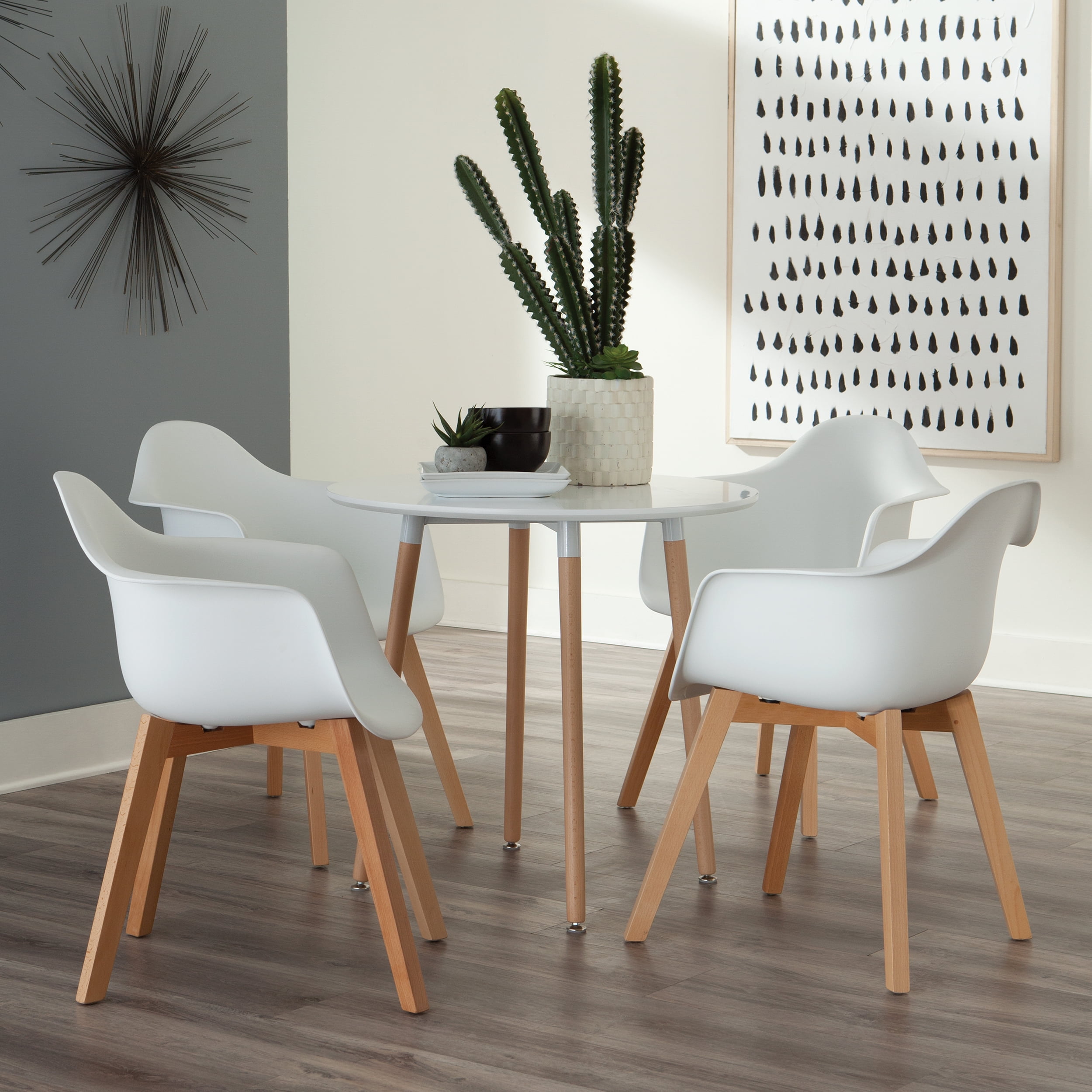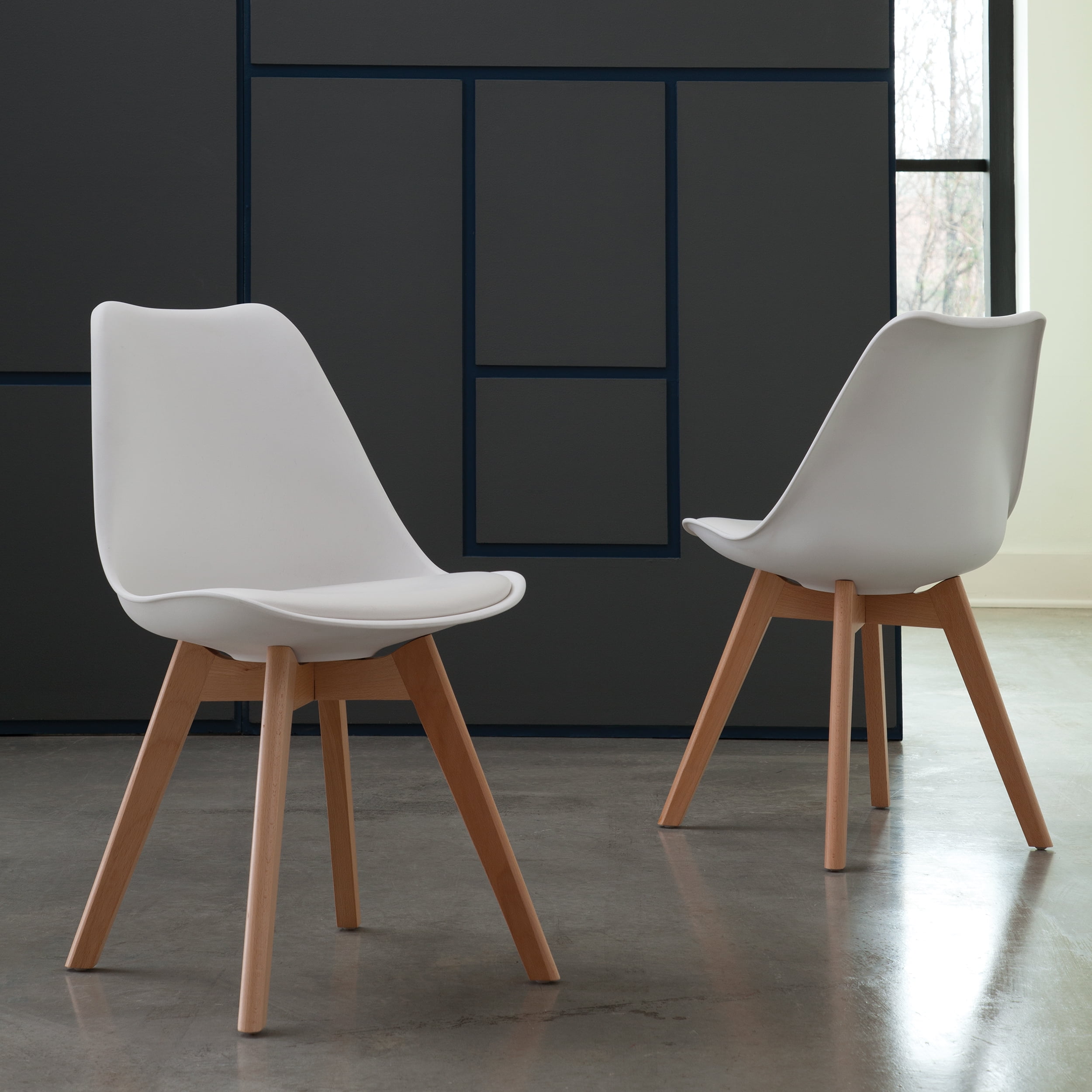Design and Aesthetics of Molded Plastic Dining Chairs

Molded plastic dining chairs, once relegated to utilitarian spaces, have evolved into sophisticated design pieces reflecting a wide spectrum of aesthetics and price points. Their versatility stems from the inherent properties of plastic—malleability, affordability, and durability—allowing for creative expression across various design styles. This adaptability has made them a staple in both residential and commercial settings.
Design Aesthetics Across Price Points and Styles
The design aesthetics of molded plastic dining chairs vary considerably depending on price point and intended style. Higher-priced chairs often incorporate more intricate designs, premium materials (such as reinforced plastics or blends), and advanced manufacturing techniques resulting in superior comfort and durability. Conversely, budget-friendly options prioritize functionality and affordability, often sacrificing some aesthetic complexity.
- Modern: Characterized by clean lines, minimalist forms, and a focus on functionality. Key features often include sleek silhouettes, a limited color palette (often monochrome), and the use of transparent or translucent plastics. Some incorporate geometric patterns or subtle textural variations.
- Traditional: These chairs emulate classic dining chair styles, often drawing inspiration from wood or metal designs. They might feature ornate details, curved backs, and decorative elements molded into the plastic. Color palettes tend to be more varied, incorporating warm tones and traditional patterns.
- Minimalist: These chairs prioritize simplicity and functionality above all else. They are typically characterized by simple, unadorned shapes, neutral colors, and a lack of decorative elements. The focus is on clean lines and a sense of understated elegance.
Innovative Design Features in Molded Plastic Chairs
The inherent properties of plastic allow for innovative design features not easily replicated in other materials. These features enhance both the aesthetic appeal and practical functionality of the chairs.
- Ergonomic Seating: Advanced molding techniques allow for the creation of chairs with contoured seats and backs that provide superior comfort and support. These chairs often incorporate curves and recesses that conform to the human body, reducing pressure points and promoting good posture. For example, some manufacturers use pressure mapping technology to optimize the design for maximum ergonomic benefit.
- Stackable Designs: Many molded plastic chairs are designed to stack easily for convenient storage. This feature is particularly useful in commercial settings or for those with limited space. Interlocking mechanisms or strategically placed recesses ensure stability when stacked.
Visual Description of a Modern Molded Plastic Dining Chair
Imagine a chair with a sleek, almost sculptural form. Its base is a slender, four-legged structure crafted from a matte-black, reinforced plastic, providing a sturdy yet visually light foundation. The seat and back are a single, molded piece of translucent, smoky-grey plastic. The chair’s design is characterized by gentle curves that flow seamlessly from the seat to the back, creating an organic yet modern aesthetic. The subtle variations in the thickness of the plastic create a soft, almost fabric-like texture, while the translucent quality allows light to filter through, adding depth and visual interest. The overall effect is one of sophisticated simplicity, a harmonious blend of form and function.
Market Trends and Consumer Preferences for Molded Plastic Dining Chairs

The market for molded plastic dining chairs is dynamic, influenced by a complex interplay of environmental concerns, evolving design aesthetics, and shifting consumer priorities. Understanding these factors is crucial for manufacturers and designers seeking to create successful and sustainable products. This section will explore current market trends, consumer preferences, and potential future directions in this competitive sector.
Consumer Purchasing Factors
Consumers consider several key factors when purchasing molded plastic dining chairs. Price remains a significant driver, particularly for budget-conscious buyers. Durability, encompassing strength, resistance to damage, and longevity, is another major consideration. Style and aesthetics play a vital role, with consumers seeking chairs that complement their existing décor and personal taste. Ease of maintenance, including cleaning and overall upkeep, is also a critical factor, particularly for families with young children or pets. Finally, the chair’s comfort and ergonomics, encompassing factors like seat height, back support, and overall seating experience, are increasingly important aspects of the purchasing decision. These elements combine to shape consumer choices in this competitive market.
Current Market Trends
Sustainability is rapidly gaining prominence in the molded plastic dining chair market. Consumers are increasingly environmentally conscious, demanding chairs made from recycled materials or possessing eco-friendly attributes. This has led to a rise in the use of recycled plastics and the development of biodegradable alternatives. Simultaneously, there is a growing preference for minimalist and contemporary designs, characterized by clean lines, simple forms, and neutral color palettes. Stackability is another important trend, offering space-saving solutions for smaller dining areas or storage. The demand for lightweight yet sturdy chairs also reflects a desire for ease of handling and mobility. These trends reflect a shift toward both practical and environmentally responsible choices.
Future Trends in the Molded Plastic Dining Chair Market
The future of molded plastic dining chairs will likely be shaped by several key factors.
- Technological Advancements: Further advancements in plastic molding techniques may lead to the creation of chairs with enhanced durability, lighter weight, and improved ergonomic designs. For instance, the use of advanced materials like high-performance polymers could result in chairs that are stronger and more resistant to wear and tear.
- Customization and Personalization: Consumers may increasingly demand greater levels of customization, with options to personalize chair designs, colors, and finishes. This could involve online design tools or made-to-order options, allowing for a more bespoke approach to chair selection.
- Smart Chair Technology: The integration of smart technologies, such as embedded sensors or connectivity features, could become more prevalent. This could lead to chairs that monitor usage, adapt to user preferences, or even offer interactive features.
- Increased Sustainability Focus: The demand for sustainable and eco-friendly materials and manufacturing processes will continue to grow. This will likely involve increased use of recycled plastics, biodegradable materials, and sustainable manufacturing practices. Companies that prioritize transparency in their supply chains and manufacturing processes are likely to gain a competitive edge.
